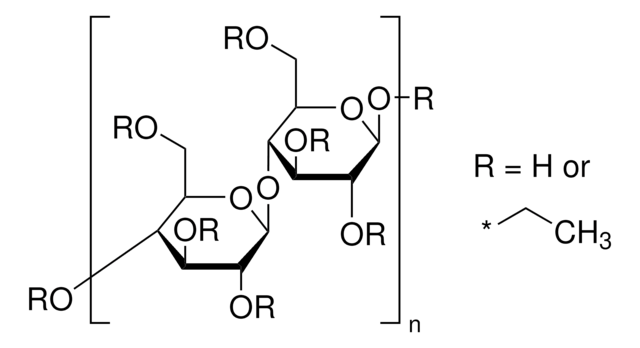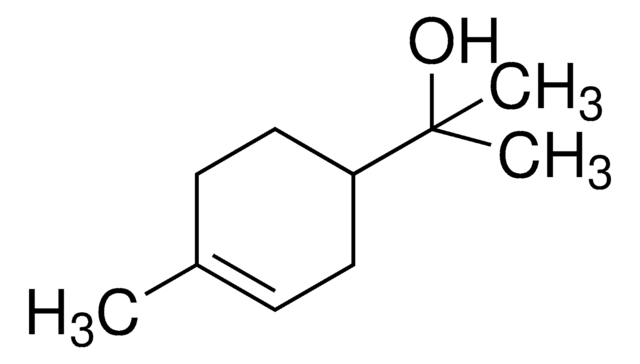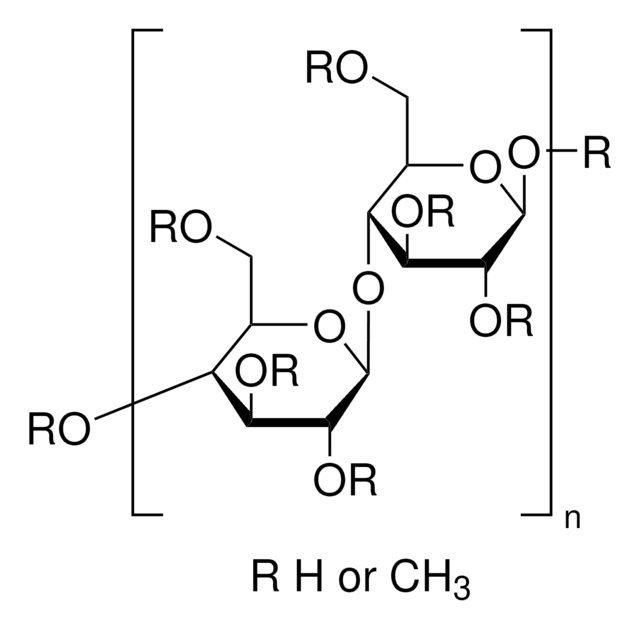200654
Ethyl cellulose
viscosity 300 cP, 5 % in toluene/ethanol 80:20(lit.), extent of labeling: 48% ethoxyl
Synonym(s):
Ethylcellulose
About This Item
Recommended Products
form
granular
Quality Level
autoignition temp.
698 °F
concentration
48.0-49.5%
extent of labeling
48% ethoxyl
refractive index
n20/D 1.47 (lit.)
viscosity
300 cP, 5 % in toluene/ethanol 80:20(lit.)
transition temp
softening point 157 °C
density
1.14 g/mL at 25 °C (lit.)
SMILES string
O1[C@H](C(C(C(C1COCC)OCC)OCC)OCC)O[C@@H]2C(OC(C(C2OCC)OCC)OCC)COCC
InChI
1S/C28H54O11/c1-9-29-17-19-21(31-11-3)23(32-12-4)26(35-15-7)28(38-19)39-22-20(18-30-10-2)37-27(36-16-8)25(34-14-6)24(22)33-13-5/h19-28H,9-18H2,1-8H3/t19?,20?,21?,22-,23?,24?,25?,26?,27?,28+/m1/s1
InChI key
MINRZDZESGXKDM-OLIDUAMRSA-N
Looking for similar products? Visit Product Comparison Guide
Related Categories
General description
Application
It can be used as an efficient carrier for multiparticulate sustained drug delivery. For example, it can be used to develop polymeric microspheres for the controlled release of Ivabradine HCL (IBH).
Storage Class Code
11 - Combustible Solids
WGK
WGK 1
Flash Point(F)
Not applicable
Flash Point(C)
Not applicable
Personal Protective Equipment
Choose from one of the most recent versions:
Already Own This Product?
Find documentation for the products that you have recently purchased in the Document Library.
Customers Also Viewed
Our team of scientists has experience in all areas of research including Life Science, Material Science, Chemical Synthesis, Chromatography, Analytical and many others.
Contact Technical Service




